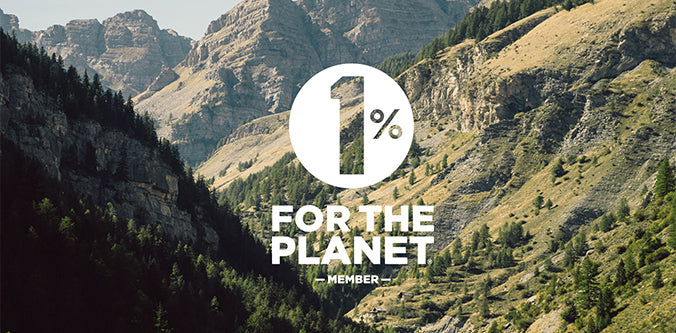LA MAISON
NICE RIDING GUIDE
NICE RIDING GUIDE NICE CYCLING PARADISE There’s a very good reason why the ville of Nice used #nicecyclingparadise to promote the start of the 2020 Tour de France. Or maybe a hundred and counting good reasons if you start to add up the plethora of roads, routes and rides that the region offers up to any visiting cyclist. And it is not just about the numbers, it’s about the sheer variety of riding that is available. From hors category climbs to spins by the sea, from breaks for the Italian border to gravel grinds, from classic Cols to unknown tracks. CAFÉ DU CYCLISTE is based in Nice. Our clothing is inspired by where we ride and we ride every day. And even we regularly find something new to discover. ROAD RIDES With an almost endless choice, selecting our favorite rides isn’t easy. We’ve curated a selection that includes hills, mountains and the sea. Something for everyone, or something for every day that you’re here. ÉZE & MADONE Climbing Col d’Éze is following in the tyre tracks of some of the world’s best cyclists. VIEW THE RIDE GILETTE & BONSON The back country of Nice opens up behind the coast and this ride provides easy access. VIEW THE RIDE CAP D'ANTIBES A Cote d’Azur roll-out that hugs the sea and arrives at one of the region’s most well-known towns. VIEW THE RIDE DURANUS & SAINT BLAISE Head up the valley to where three rivers meet, climb higher still and take the time to look around. VIEW THE RIDE BRAUS & TURINI A ride that includes two of the majestic cols from our Montaignes a la Carte series. VIEW THE RIDE VENCE The Col de Vence is south facing and the rocky landscape reflects the heat all year around. VIEW THE RIDE ESTEREL & ADRETS The Esterel coast road starting from Théoule-sur-Mer is beautiful, winding through secluded coves. VIEW THE RIDE MORTOLA Pretend you're James Bond on a bike as you spin along the Basse Corniche out of Nice towards Monaco. VIEW THE RIDE BONETTE Join the climb directly from the village and get ready for a day of zero flat riding by climbing and descending both sides of the mountain,. VIEW THE RIDE MONT CHAUVE Mont Chauve, known as Nice’s ‘bald mountain’, proves that nature constructed one of the best viewpoints the city has to offer. VIEW THE RIDE NISSA ALL-ROAD Linking two classic Alpes-Maritimes cols via a gravel ridge-line ride on a loop that takes you from portside to the heart of the mountains and back again. VIEW THE RIDE GRAVEL RIDES The Alpes Maritimes is rapidly becoming as well known for its gravel riding as its historic road riding. Choose a new route up an old climb or find yourself away from it all with only sheep for company. Riviera Gravel is ripe for exploring. MONT FÉRION The gravel equivalent of Mont Ventoux. With three sides to climb and a chapel. VIEW THE RIDE L'ESTÉREL Green forests, red gravel, blue skies. The Route des Cols is a badly kept secret. VIEW THE RIDE FORT DE LA REVÈRE From the perched village of La Turbie and along the most spectacular stretch of chemin VIEW THE RIDE COL DE BRAUS One of the most iconic climbs anywhere in cycling but with a dark side. VIEW THE RIDE VIA DEL SALE One of the highest unpaved roads within reach of Nice and possibly the most impressive. VIEW THE RIDE MONT MACARON As you follow the contours of the mountain, you get treated to a balcony view of the Baie des Anges. VIEW THE RIDE COL D'ÈZE Yes, the roads of l'arrière pays are mostly car-free, but if you really want to get away from it all, gravel is your friend. VIEW THE RIDE OUR COLS AND SERIOUS CLIMBS The region is known for its high hills, as befitting the name Alpes Maritimes. There are the famous ones such as Col de la Bonette, often cited as the highest paved road in Europe, the soon to be famous one such as Col de Turini, with more switchbacks in less tarmac than Alpe d’Huez and the hopefully never famous ones such Mont Chauvre which rise above the town of Nice itself. Choose your climb and climb on your bike. MONT CHAUVE ‘Mont Chauve’ means the 'bald mountain' – it is the miniature Niçois version of the much better known ‘Mont Chauve’, Mont Ventoux, in Provence. It is hiding in plain sight, sitting there just to the north, right above the city. VIEW THE CLIMB COL DE BROUIS From Sospel the climb starts in the pleasant and open meadows in the valley of the small river Bevera. It ascends through deep gorges, though never too tight, and ends in open meadows again. VIEW THE CLIMB COL D'ÈZE Between Èze village and the Fort de la Revère runs the Route de la Grande Corniche. Starting almost at the Café, it takes you steeply out of town, winding up through the hills to a height of 507m. VIEW THE CLIMB COL DE LA MADONE It mounts the hill with the sharp gradients of Corniche des serres de la Madone which immediately plunges you into a series of hairpins through vine trees that help make the town famous for its gardens and greenery. VIEW THE CLIMB COL DE LA BONETTE The Bonette road was built by Napoleon III and is one of the best climbs in the Alps, of whatever height, and that the prodigious altitude just gives you longer to appreciate its charms VIEW THE CLIMB MADONE D'UTELLE Ride in the back country around Nice, and one of those reference points is the chapel of the Madone d’Utelle VIEW THE CLIMB COL DE TENDE If you turn right off the main road just over 1km before the Tende tunnel, you can add 17 more to make a dizzying total of 65 about turns. Plus the last 4kms are on gravel. VIEW THE CLIMB MONT VENTOUX Though geologically part of the Alps, Ventoux stands more or less alone, unencumbered by mountains of equal stature. VIEW THE CLIMB COL DE TURINI The thick forests of the Col de Turini are testament to the unpredictable weather on this, the highest of the coastal climbs near Café du Cycliste’s home town of Nice. VIEW THE CLIMB COL DE BRAUS About two kilometres from the top of the Col de Braus there is a section of 15% gradient. As this passes, the road takes a little turn to the right and the climb now invites you to look back over the valley. VIEW THE CLIMB COL DE VENCE It is the furthest west, and therefore the furthest of our favourite climbs from the great spine of the Alps, divider of peoples, trapper of clouds that lifts itself between France and Italy. VIEW THE CLIMB MONT VIAL Mont Vial is one of the few peaks of the backcountry behind Nice that is recognisable from the sea, and cyclists riding towards the Var valley can orient themselves by it, too. VIEW THE CLIMB COL DE LA COLMAINE The label of medium should not make the exploring cyclist underestimate either the physical challenge or the alpine beauty that it delivers. VIEW THE CLIMB COLS ON FILM Alpe d’Huez famously has 21 switchbacks, hairpins, or lacets - call them what you want. The Passo dello Stelvio has 48 on the classic eastern side but that’s in 16.5kms and all on tarmac. The Col de Tende manages the same number in 7.4kms CLAIM YOUR BADGE To celebrate the roads we ride, we created a badge for each of our local cols, the exceptional climbs featured in our Montaigne a la Carte series. To claim your badge you need to ride the climb then connect your Café du Cycliste account to your Strava account. 1 - THE CAFÉ Located on the Old Port, our café is the perfect pre and post-ride meeting place. With some routes that begin almost outside, excellent coffee and a full range of our clothing collections for men and women. There are weekly rides as well if you’d like to discover riding on the Cote D’Azur with like minded companions. You can find us at: 16 Quai des Docks 06300 Nice 2 - RENT AND RIDE Travel light and book your bike. We offer a range of rental bikes, the R5 Cervelo road bike and the Aspero Cervelo gravel bike along with titanium road bikes from French marque Leon. Each bike is complete with pedals, tool bag and rear light while, if needed, each rental can also include Specialized shoes and helmet. View our rental bikes 3 - THE RIDE OF THE MONTH Each month we choose a ride that particularly beautiful, tough or rewarding (or all three) during a particular month of the year. August. Sharing two almost secret climbs that take you up past the tree lines to provide a window on to the wild high peaks of the Mercantour National Park. VIEW THE RIDE PRACTICAL how to arrive With direct flights from around 30 European countries as well as further afield, Nice is well connected by air. The tram line now goes direct to the old Port, where our café is situated. For more information on flights, see the Aeroport de Nice website. Nice has two train stations. From Paris the journey is around six hours and brings you into the heart of the city. For more information on trains, see the SNCF website. where to stay Despite the exceptional riding on its doorstep , Nice is the fifth biggest city in France. Given its attractions, there are numerous place to stay while you’re here, from hotels through to guest houses and, of course, private appartment rentals. For more information on where to stay, see the Nice Tourist board website.









































